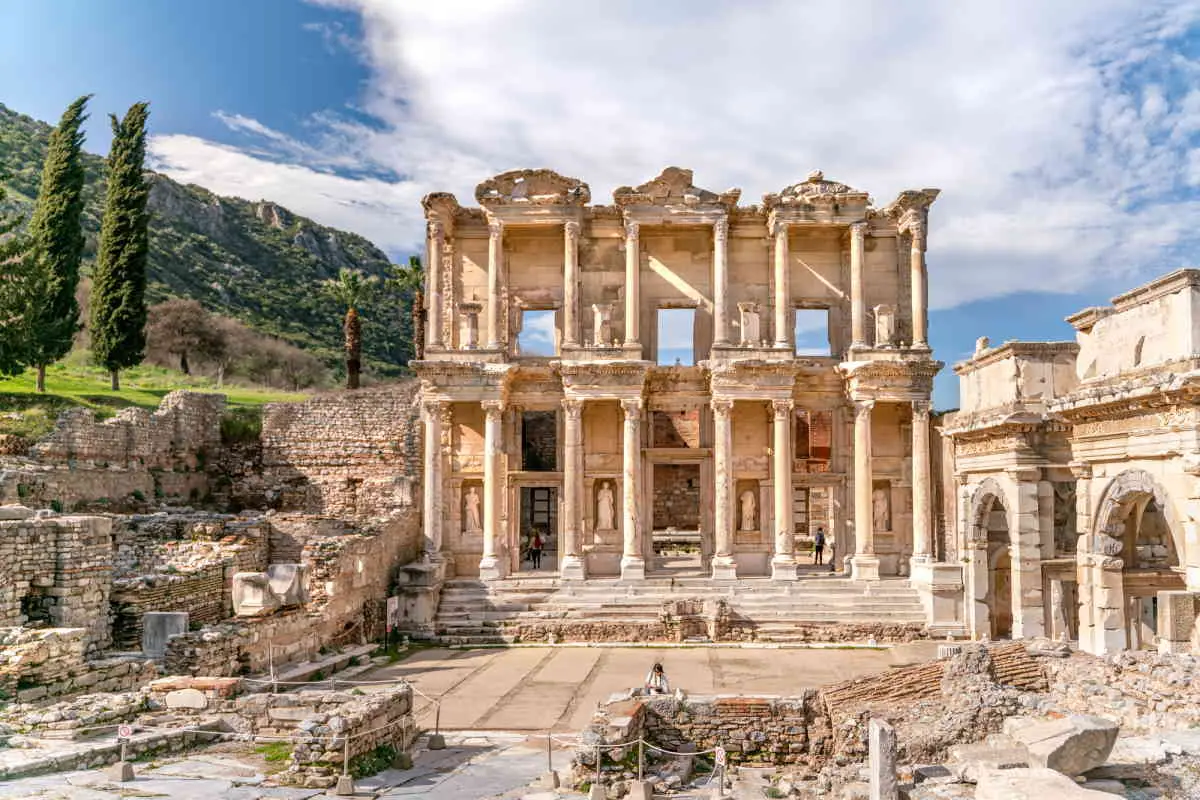There are a total of 1,223 UNESCO World Heritage Sites in the world (as of 2024: 952 Cultural, 231 Natural, and 40 Mixed) in 168 countries. Here are the top 20 countries having the most UNESCO World Heritage sites.
What is a UNESCO World Heritage Site?
A UNESCO World Heritage Site is a place that is listed by the United Nations Educational, Scientific and Cultural Organization (UNESCO) as being of special cultural or physical significance. These places can include a building, city, district, complex, monument, etc. (“cultural” world heritage site), or a desert, forest, island, lake, mountain, etc. (“natural” world heritage site). Some of these sites are “mixed” which means they both have cultural and natural heritage.
Top 20 countries with the most UNESCO World Heritage sites
The 20th, 19th, and 18th countries, Czechia, Poland, and Portugal have 20 UNESCO World Heritage Sites. They are listed in alphabetical order.
20. Czechia
Total number of UNESCO World Heritage Sites: 17
Natural: 1, Cultural: 16
- Historic Centre of Český Krumlov (cultural)
- Historic Centre of Prague (cultural)
- Historic Centre of Telč (cultural)
- Pilgrimage Church of St John of Nepomuk at Zelená Hora (cultural)
- Kutná Hora: Historical Town Centre with the Church of St Barbara and the Cathedral of Our Lady at Sedlec (cultural)
- Lednice-Valtice Cultural Landscape (cultural)
- Gardens and Castle at Kroměříž (cultural)
- Holašovice Historic Village (cultural)
- Litomyšl Castle (cultural)
- Holy Trinity Column in Olomouc (cultural)
- Tugendhat Villa in Brno (cultural)
- Jewish Quarter and St Procopius’ Basilica in Třebíč (cultural)
- Ancient and Primeval Beech Forests of the Carpathians and Other Regions of Europe * (natural)
- Erzgebirge/Krušnohoří Mining Region * (cultural)
- The landscape for Breeding and Training of Ceremonial Carriage Horses at Kladruby nad Labem (cultural)
- The Great Spa Towns of Europe (cultural)
- Žatec and the Landscape of Saaz Hops (cultural)
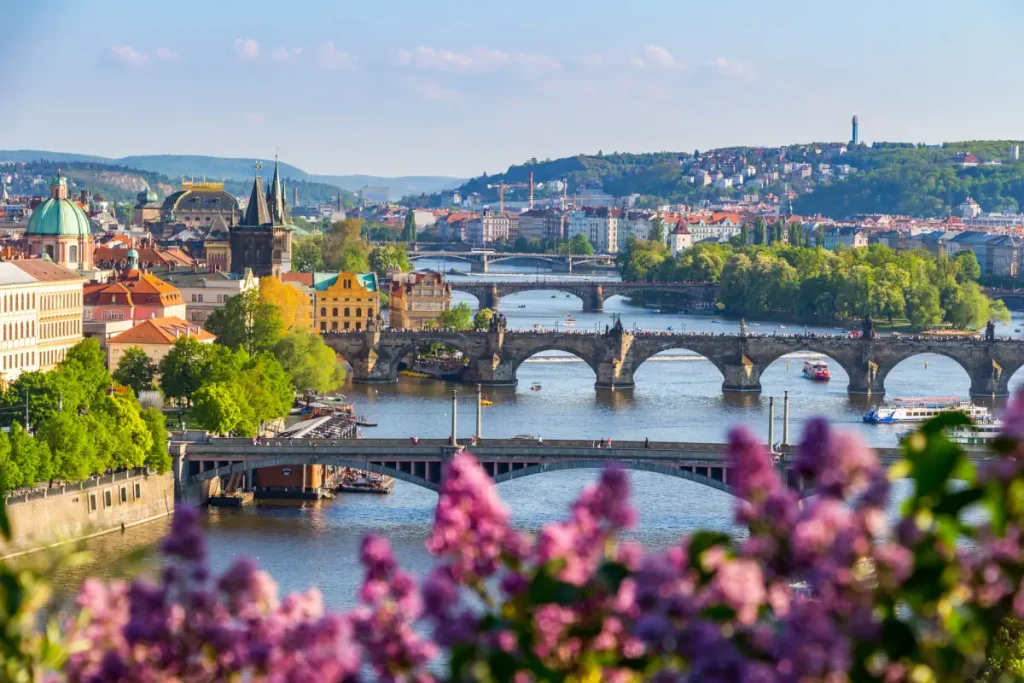
19. Poland
Total number of UNESCO World Heritage Sites: 17
Natural: 2, Cultural: 15
- Historic Centre of Kraków (cultural)
- Wieliczka and Bochnia Royal Salt Mines (cultural)
- Auschwitz Birkenau German Nazi Concentration and Extermination Camp (1940-1945) (cultural)
- Białowieża Forest * (natural)
- Historic Centre of Warsaw (cultural)
- The Old City of Zamość (cultural)
- Castle of the Teutonic Order in Malbork (cultural)
- Medieval Town of Toruń (cultural)
- Kalwaria Zebrzydowska: the Mannerist Architectural and Park Landscape Complex and Pilgrimage Park (cultural)
- Churches of Peace in Jawor and Świdnica (cultural)
- Wooden Churches of Southern Małopolska (cultural)
- Muskauer Park / Park Mużakowski * (cultural)
- Centennial Hall in Wrocław (cultural)
- Ancient and Primeval Beech Forests of the Carpathians and Other Regions of Europe * (natural)
- Wooden Tserkvas of the Carpathian Region in Poland and Ukraine * (cultural)
- Tarnowskie Góry Lead-Silver-Zinc Mine and its Underground Water Management System (cultural)
- Krzemionki Prehistoric Striped Flint Mining Region (cultural)
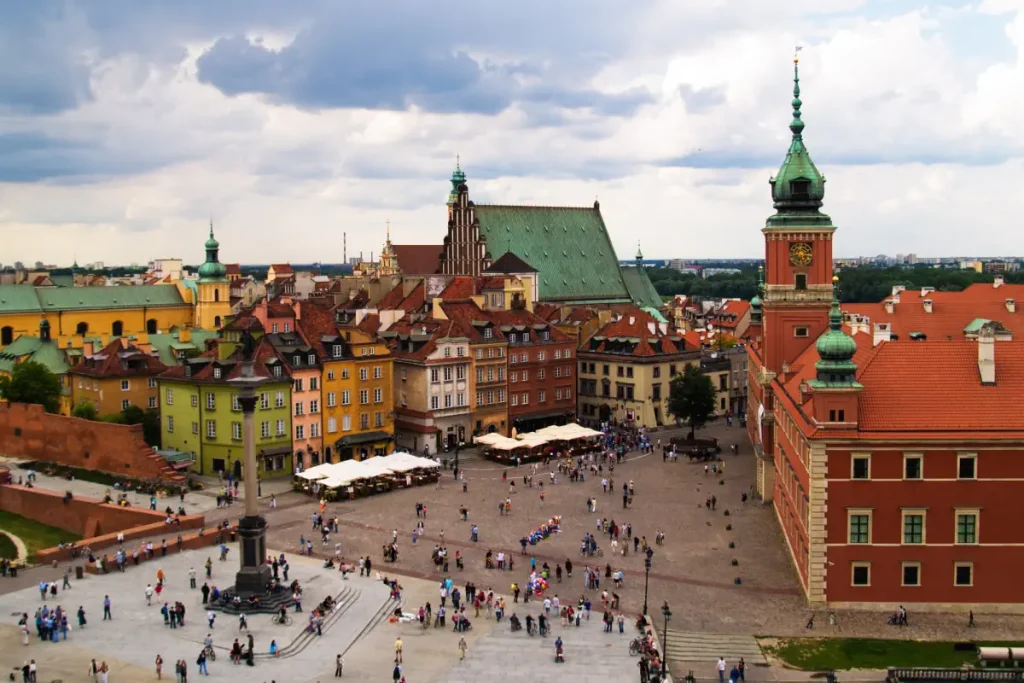
18. Portugal
Total number of UNESCO World Heritage Sites: 17
Natural: 1, Cultural: 16
- Central Zone of the Town of Angra do Heroismo in the Azores (cultural)
- Convent of Christ in Tomar (cultural)
- Monastery of Batalha (cultural)
- Monastery of the Hieronymites and Tower of Belém in Lisbon (cultural)
- Historic Centre of Évora (cultural)
- Monastery of Alcobaça (cultural)
- Cultural Landscape of Sintra (cultural)
- Historic Centre of Oporto, Luiz I Bridge and Monastery of Serra do Pilar (cultural)
- Prehistoric Rock Art Sites in the Côa Valley and Siega Verde * (cultural)
- Laurisilva of Madeira (natural)
- Alto Douro Wine Region (cultural)
- Historic Centre of Guimarães (cultural)
- The landscape of the Pico Island Vineyard Culture (cultural)
- Garrison Border Town of Elvas and its Fortifications (cultural)
- University of Coimbra – Alta and Sofia (cultural)
- Royal Building of Mafra – Palace, Basilica, Convent, Cerco Garden, and Hunting Park (Tapada) (cultural)
- Sanctuary of Bom Jesus do Monte in Braga (cultural)
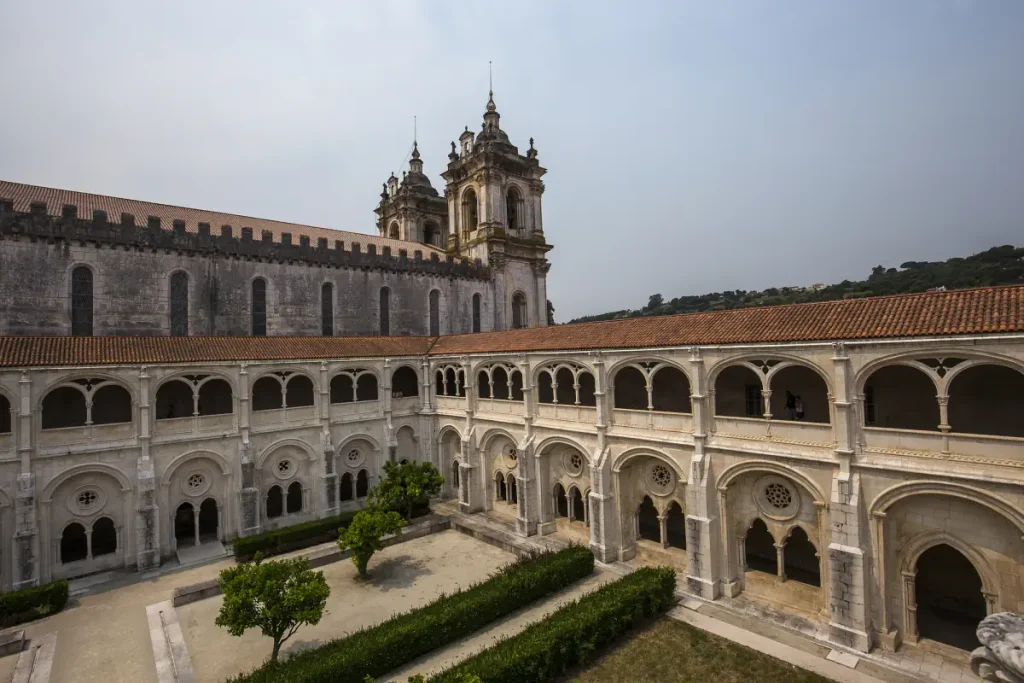
17. Greece
Total number of UNESCO World Heritage Sites: 19
Cultural: 17, Mixed: 2
- Temple of Apollo Epicurius at Bassae (cultural)
- Acropolis, Athens (cultural)
- Archaeological Site of Delphi (cultural)
- Medieval City of Rhodes (cultural)
- Meteora (mixed)
- Mount Athos (mixed)
- Paleochristian and Byzantine Monuments of Thessalonika (cultural)
- Sanctuary of Asklepios at Epidaurus (cultural)
- Archaeological Site of Mystras (cultural)
- Archaeological Site of Olympia (cultural)
- Delos (cultural)
- Monasteries of Daphni, Hosios Loukas, and Nea Moni of Chios (cultural)
- Pythagoreion and Heraion of Samos (cultural)
- Archaeological Site of Aigai (modern name Vergina) (cultural)
- Archaeological Sites of Mycenae and Tiryns (cultural)
- The Historic Centre (Chorá) with the Monastery of Saint-John the Theologian and the Cave of the Apocalypse on the Island of Pátmos (cultural)
- Old Town of Corfu (cultural)
- Archaeological Site of Philippi (cultural)
- Zagori Cultural Landscape (cultural)
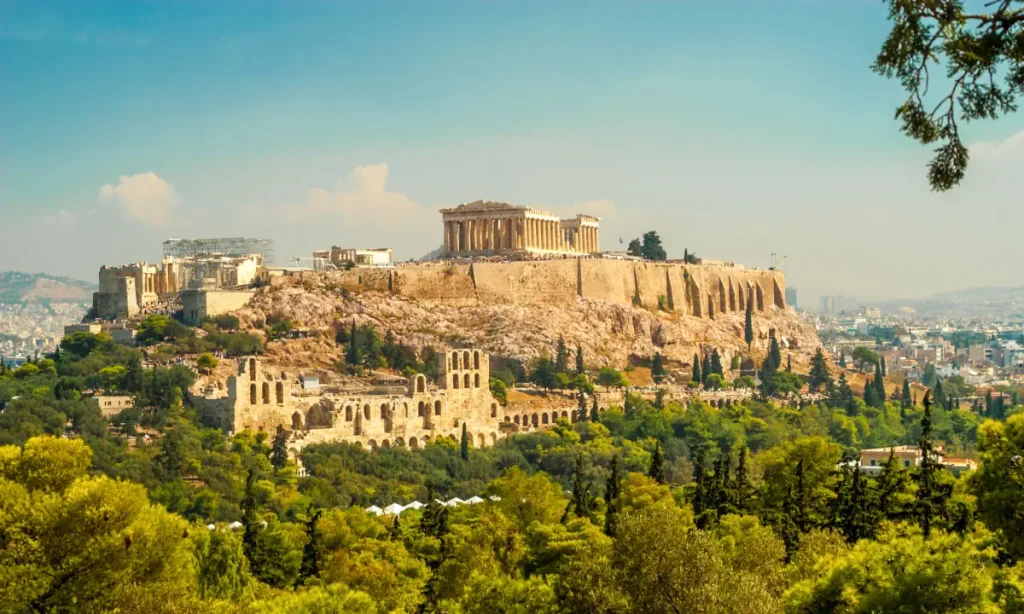
16. Australia
Total number of UNESCO World Heritage Sites: 20
Natural: 12, Cultural: 4, Mixed: 4
- Great Barrier Reef (natural)
- Kakadu National Park (mixed)
- Willandra Lakes Region (mixed)
- Lord Howe Island Group (natural)
- Tasmanian Wilderness (mixed)
- Gondwana Rainforests of Australia (natural)
- Uluru-Kata Tjuta National Park (mixed)
- Wet Tropics of Queensland (natural)
- Shark Bay, Western Australia (natural)
- Fraser Island (natural)
- Australian Fossil Mammal Sites (Riversleigh / Naracoorte) (natural)
- Heard and McDonald Islands (natural)
- Macquarie Island (natural)
- Greater Blue Mountains Area (natural)
- Purnululu National Park (natural)
- Royal Exhibition Building and Carlton Gardens (cultural)
- Sydney Opera House (cultural)
- Australian Convict Sites (cultural)
- Ningaloo Coast (natural)
- Budj Bim Cultural Landscape (cultural)

15. Türkiye (Formerly Turkey)
Total number of UNESCO World Heritage Sites: 21
Cultural: 19, Mixed: 2
- Göreme National Park and the Rock Sites of Cappadocia (mixed)
- Great Mosque and Hospital of Divriği (cultural)
- Historic Areas of Istanbul (cultural)
- Hattusha: the Hittite Capital (cultural)
- Nemrut Dağ (cultural)
- Hierapolis-Pamukkale (mixed)
- Xanthos-Letoon (cultural)
- City of Safranbolu (cultural)
- Archaeological Site of Troy (cultural)
- Selimiye Mosque and its Social Complex (cultural)
- Neolithic Site of Çatalhöyük (cultural)
- Bursa and Cumalıkızık: the Birth of the Ottoman Empire (cultural)
- Pergamon and its Multi-Layered Cultural Landscape (cultural)
- Diyarbakır Fortress and Hevsel Gardens Cultural Landscape (cultural)
- Ephesus (cultural)
- Archaeological Site of Ani (cultural)
- Aphrodisias (cultural)
- Göbekli Tepe (cultural)
- Arslantepe Mound (cultural)
- Gordion (cultural)
- Wooden Hypostyle Mosques of Medieval Anatolia (cultural)
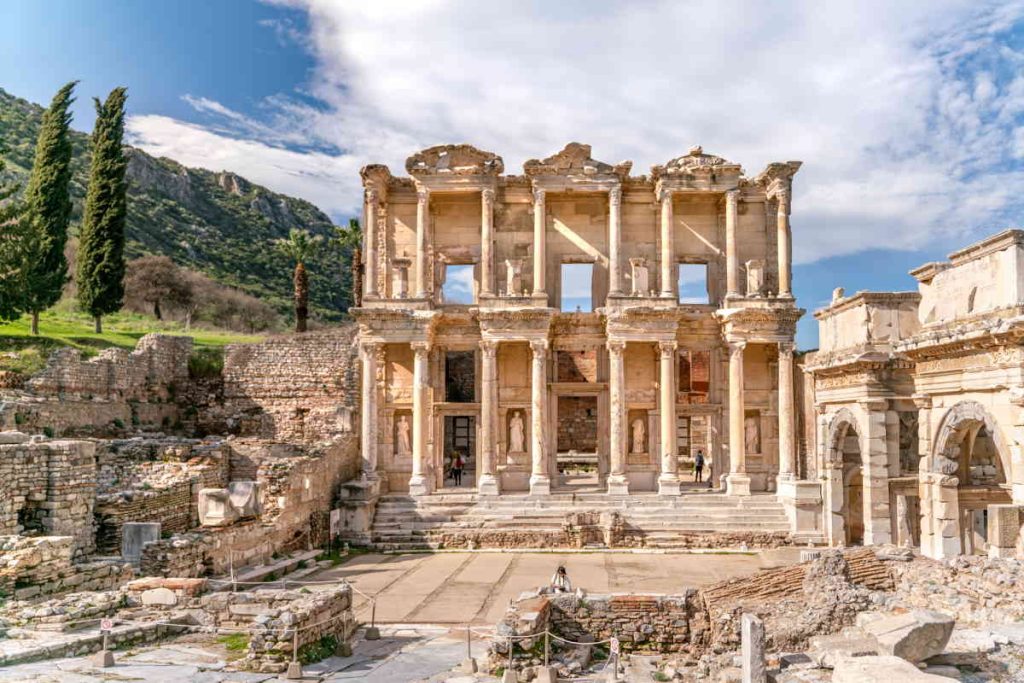
14. Canada
Total number of UNESCO World Heritage Sites: 22
Natural: 11, Cultural: 10, Mixed: 1
- L’Anse aux Meadows National Historic Site (cultural)
- Nahanni National Park (natural)
- Dinosaur Provincial Park (natural)
- Kluane / Wrangell-St. Elias / Glacier Bay / Tatshenshini-Alsek (natural)
- Head-Smashed-In Buffalo Jump (cultural)
- SGang Gwaay (cultural)
- Wood Buffalo National Park (natural)
- Canadian Rocky Mountain Parks (natural)
- Historic District of Old Québec (cultural)
- Gros Morne National Park (natural)
- Old Town Lunenburg (cultural)
- Waterton Glacier International Peace Park * (natural)
- Miguasha National Park (natural)
- Rideau Canal (cultural)
- Joggins Fossil Cliffs (natural)
- The landscape of Grand Pré (cultural)
- Red Bay Basque Whaling Station (cultural)
- Mistaken Point (natural)
- Pimachiowin Aki (mixed)
- Writing-on-Stone / Áísínai’pi (cultural)
- Anticosti (natural)
- Tr’ondëk-Klondike (cultural)

13. Brazil
Total number of UNESCO World Heritage Sites: 24
Natural: 8, Cultural: 15, Mixed: 1
- Historic Town of Ouro Preto (cultural)
- Historic Centre of the Town of Olinda (cultural)
- Jesuit Missions of the Guaranis: San Ignacio Mini, Santa Ana, Nuestra Señora de Loreto and Santa Maria Mayor (Argentina), Ruins of Sao Miguel das Missoes (Brazil) * (cultural)
- Historic Centre of Salvador de Bahia (cultural)
- Sanctuary of Bom Jesus do Congonhas (cultural)
- Iguaçu National Park (natural)
- Brasilia (cultural)
- Serra da Capivara National Park (cultural)
- Historic Centre of São Luís (cultural)
- Atlantic Forest South-East Reserves (natural)
- Discovery Coast Atlantic Forest Reserves (natural)
- Historic Centre of the Town of Diamantina (cultural)
- Central Amazon Conservation Complex (natural)
- Pantanal Conservation Area (natural)
- Brazilian Atlantic Islands: Fernando de Noronha and Atol das Rocas Reserves (natural)
- Cerrado Protected Areas: Chapada dos Veadeiros and Emas National Parks (natural)
- Historic Centre of the Town of Goiás (cultural)
- São Francisco Square in the Town of São Cristóvão (cultural)
- Rio de Janeiro: Carioca Landscapes between the Mountain and the Sea (cultural)
- Pampulha Modern Ensemble (cultural)
- Valongo Wharf Archaeological Site (cultural)
- Paraty and Ilha Grande – Culture and Biodiversity (mixed)
- Sítio Roberto Burle Marx (cultural)
- Lençóis Maranhenses National Park (natural)

The 12th and 11th countries, Japan and the United States both have 26 UNESCO World Heritage Sites. They are listed in alphabetical order.
12. Japan
Total number of UNESCO World Heritage Sites: 26
Natural: 5, Cultural: 21
- Buddhist Monuments in the Horyu-ji Area (cultural)
- Himeji-jo (cultural)
- Shirakami-Sanchi (natural)
- Yakushima (natural)
- Historic Monuments of Ancient Kyoto (Kyoto, Uji, and Otsu Cities) (cultural)
- Historic Villages of Shirakawa-go and Gokayama (cultural)
- Hiroshima Peace Memorial (Genbaku Dome) (cultural)
- Itsukushima Shinto Shrine (cultural)
- Historic Monuments of Ancient Nara (cultural)
- Shrines and Temples of Nikko (cultural)
- Gusuku Sites and Related Properties of the Kingdom of Ryukyu (cultural)
- Sacred Sites and Pilgrimage Routes in the Kii Mountain Range (cultural)
- Shiretoko (natural)
- Iwami Ginzan Silver Mine and its Cultural Landscape (cultural)
- Hiraizumi – Temples, Gardens, and Archaeological Sites Representing the Buddhist Pure Land (cultural)
- Ogasawara Islands (natural)
- Fujisan, sacred place and source of artistic inspiration (cultural)
- Tomioka Silk Mill and Related Sites (cultural)
- Sites of Japan’s Meiji Industrial Revolution: Iron and Steel, Shipbuilding and Coal Mining (cultural)
- The Architectural Work of Le Corbusier, an Outstanding Contribution to the Modern Movement * (cultural)
- Sacred Island of Okinoshima and Associated Sites in the Munakata Region (cultural)
- Hidden Christian Sites in the Nagasaki Region (cultural)
- Mozu-Furuichi Kofun Group: Mounded Tombs of Ancient Japan (cultural)
- Amami-Oshima Island, Tokunoshima Island, the Northern part of Okinawa Island, and Iriomote Island (natural)
- Jomon Prehistoric Sites in Northern Japan (cultural)
- Sado Island Gold Mines (cultural)
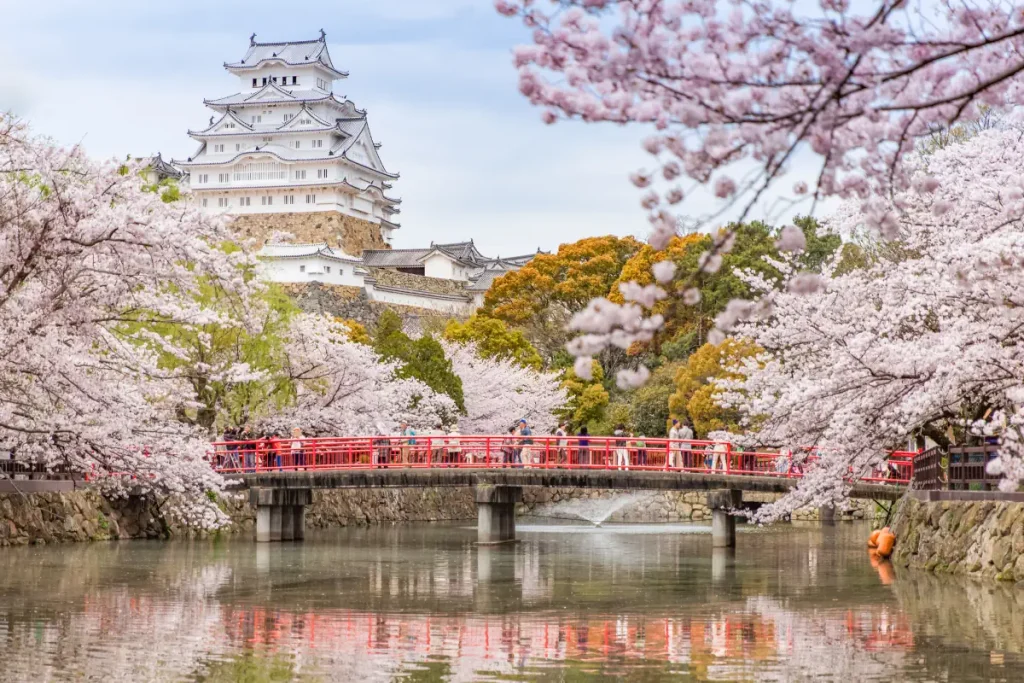
11. The United States of America
Total number of UNESCO World Heritage Sites: 26
Natural: 12, Cultural: 13, Mixed: 1, In Danger: 1
- Mesa Verde National Park (cultural)
- Yellowstone National Park (natural)
- Everglades National Park (natural) (IN DANGER)
- Grand Canyon National Park (natural)
- Independence Hall (cultural)
- Kluane / Wrangell-St. Elias / Glacier Bay / Tatshenshini-Alsek (natural)
- Redwood National and State Parks (natural)
- Mammoth Cave National Park (natural)
- Olympic National Park (natural)
- Cahokia Mounds State Historic Site (cultural)
- Great Smoky Mountains National Park (natural)
- La Fortaleza and San Juan National Historic Site in Puerto Rico (cultural)
- Statue of Liberty (cultural)
- Yosemite National Park (natural)
- Chaco Culture (cultural)
- Hawaii Volcanoes National Park (natural)
- Monticello and the University of Virginia in Charlottesville (cultural)
- Taos Pueblo (cultural)
- Carlsbad Caverns National Park (natural)
- Waterton Glacier International Peace Park * (natural)
- Papahānaumokuākea (mixed)
- Monumental Earthworks of Poverty Point (cultural)
- San Antonio Missions (cultural)
- The 20th-Century Architecture of Frank Lloyd Wright (cultural)
- The 20th-Century Architecture of Frank Lloyd Wright (cultural)
- Hopewell Ceremonial Earthworks (cultural)

10. Iran (Islamic Republic of)
Total number of UNESCO World Heritage Sites: 28
Natural: 2, Cultural: 26
- Meidan Emam, Esfahan (cultural)
- Persepolis (cultural)
- Tchogha Zanbil (cultural)
- Takht-e Soleyman (cultural)
- Bam and its Cultural Landscape (cultural)
- Pasargadae (cultural)
- Soltaniyeh (cultural)
- Bisotun (cultural)
- Armenian Monastic Ensembles of Iran (cultural)
- Shushtar Historical Hydraulic System (cultural)
- Sheikh Safi al-din Khānegāh and Shrine Ensemble in Ardabil (cultural)
- Tabriz Historic Bazaar Complex (cultural)
- The Persian Garden (cultural)
- Gonbad-e Qābus (cultural)
- Masjed-e Jāmé of Isfahan (cultural)
- Golestan Palace (cultural)
- Shahr-i Sokhta (cultural)
- Cultural Landscape of Maymand (cultural)
- Susa (cultural)
- Lut Desert (natural)
- The Persian Qanat (cultural)
- Historic City of Yazd (cultural)
- Sassanid Archaeological Landscape of Fars Region (cultural)
- Hyrcanian Forests (natural)
- Cultural Landscape of Hawraman/Uramanat (cultural)
- Trans-Iranian Railway (cultural)
- The Persian Caravanserai (cultural)
- Hegmataneh (cultural)

9. Russian Federation
Total number of UNESCO World Heritage Sites: 32
Natural: 11, Cultural: 21
- Historic Centre of Saint Petersburg and Related Groups of Monuments (cultural)
- Kizhi Pogost (cultural)
- Kremlin and Red Square, Moscow (cultural)
- Cultural and Historic Ensemble of the Solovetsky Islands (cultural)
- Historic Monuments of Novgorod and Surroundings (cultural)
- White Monuments of Vladimir and Suzdal (cultural)
- Architectural Ensemble of the Trinity Sergius Lavra in Sergiev Posad (cultural)
- Church of the Ascension, Kolomenskoye (cultural)
- Virgin Komi Forests (natural)
- Lake Baikal (natural)
- Volcanoes of Kamchatka (natural)
- Golden Mountains of Altai (natural)
- Western Caucasus (natural)
- Curonian Spit * (cultural)
- Ensemble of the Ferapontov Monastery (cultural)
- Historic and Architectural Complex of the Kazan Kremlin (cultural)
- Central Sikhote-Alin (natural)
- Citadel, Ancient City, and Fortress Buildings of Derbent (cultural)
- Uvs Nuur Basin (natural)
- Ensemble of the Novodevichy Convent (cultural)
- Natural System of Wrangel Island Reserve (natural)
- Historical Centre of the City of Yaroslavl (cultural)
- Struve Geodetic Arc * (cultural)
- Putorana Plateau (natural)
- Lena Pillars Nature Park (natural)
- Bolgar Historical and Archaeological Complex (cultural)
- Assumption Cathedral and Monastery of the town-island of Sviyazhsk (cultural)
- Landscapes of Dauria * (natural)
- Churches of the Pskov School of Architecture (cultural)
- Petroglyphs of Lake Onega and the White Sea (cultural)
- Astronomical Observatories of Kazan Federal University (cultural)
- Cultural Landscape of Kenozero Lake (cultural)
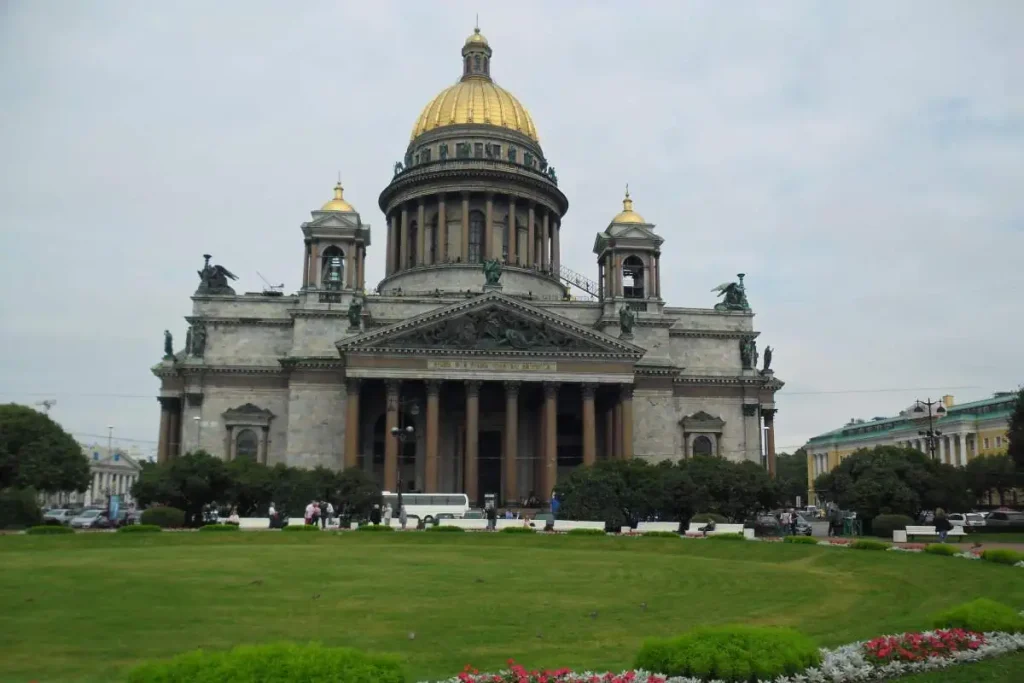
The 8th and 7th countries, Mexico and The United Kingdom of Great Britain and Northern Ireland both have 35 UNESCO World Heritage Sites. They are listed in alphabetical order.
8. Mexico
Total number of UNESCO World Heritage Sites: 35
Natural: 6, Cultural: 27, Mixed: 2, In Danger: 1
- Historic Centre of Mexico City and Xochimilco (cultural)
- Historic Centre of Oaxaca and Archaeological Site of Monte Albán (cultural)
- Historic Centre of Puebla (cultural)
- Pre-Hispanic City and National Park of Palenque (cultural)
- Pre-Hispanic City of Teotihuacan (cultural)
- Sian Ka’an (natural)
- Historic Town of Guanajuato and Adjacent Mines (cultural)
- Pre-Hispanic City of Chichen-Itza (cultural)
- Historic Centre of Morelia (cultural)
- El Tajin, Pre-Hispanic City (cultural)
- Historic Centre of Zacatecas (cultural)
- Rock Paintings of the Sierra de San Francisco (cultural)
- Whale Sanctuary of El Vizcaino (natural)
- Earliest 16th-Century Monasteries on the Slopes of Popocatepetl (cultural)
- Historic Monuments Zone of Querétaro (cultural)
- Pre-Hispanic Town of Uxmal (cultural)
- Hospicio Cabañas, Guadalajara (cultural)
- Archaeological Zone of Paquimé, Casas Grandes (cultural)
- Historic Monuments Zone of Tlacotalpan (cultural)
- Archaeological Monuments Zone of Xochicalco (cultural)
- Historic Fortified Town of Campeche (cultural)
- Ancient Maya City and Protected Tropical Forests of Calakmul, Campeche (mixed)
- Franciscan Missions in the Sierra Gorda of Querétaro (cultural)
- Luis Barragán House and Studio (cultural)
- Islands and Protected Areas of the Gulf of California (natural) (IN DANGER)
- Agave Landscape and Ancient Industrial Facilities of Tequila (cultural)
- Central University City Campus of the Universidad Nacional Autónoma de México (UNAM) (cultural)
- Monarch Butterfly Biosphere Reserve (natural)
- Protective town of San Miguel and the Sanctuary of Jesús Nazareno de Atotonilco (cultural)
- Camino Real de Tierra Adentro (cultural)
- Prehistoric Caves of Yagul and Mitla in the Central Valley of Oaxaca (cultural)
- El Pinacate and Gran Desierto de Altar Biosphere Reserve (natural)
- Aqueduct of Padre Tembleque Hydraulic System (cultural)
- Archipiélago de Revillagigedo (natural)
- Tehuacán-Cuicatlán Valley: originary habitat of Mesoamerica (mixed)
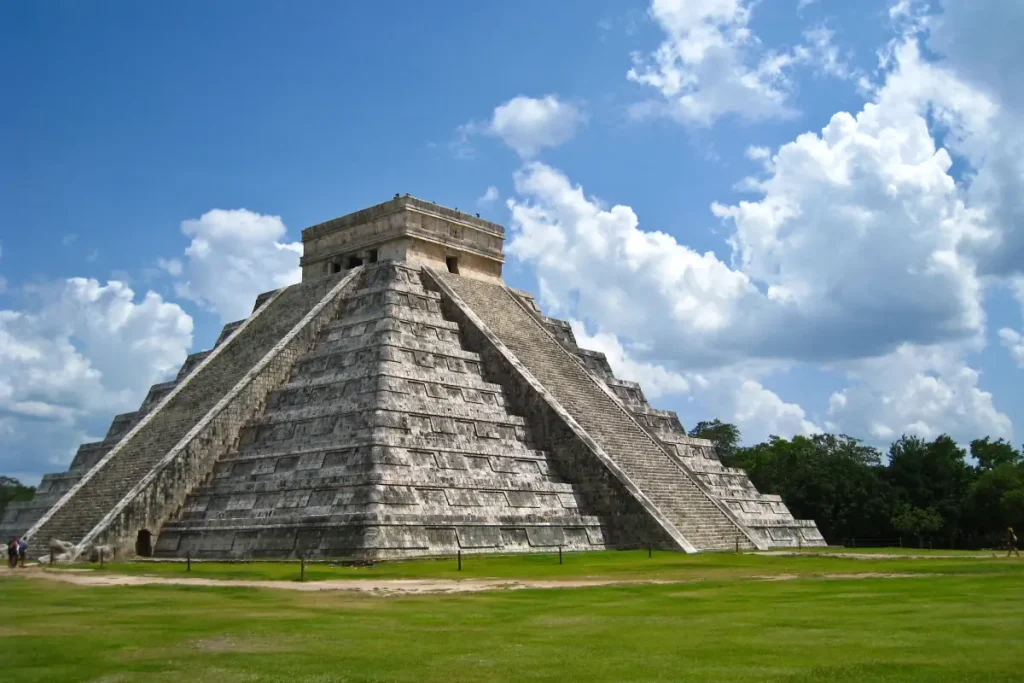
7. The United Kingdom of Great Britain and Northern Ireland
Total number of UNESCO World Heritage Sites: 35
Natural: 5, Cultural: 29, Mixed: 1
- Castles and Town Walls of King Edward in Gwynedd (cultural)
- Durham Castle and Cathedral (cultural)
- Giant’s Causeway and Causeway Coast (natural)
- Ironbridge Gorge (cultural)
- St Kilda (mixed)
- Stonehenge, Avebury, and Associated Sites (cultural)
- Studley Royal Park including the Ruins of Fountains Abbey (cultural)
- Blenheim Palace (cultural)
- City of Bath (cultural)
- Frontiers of the Roman Empire * (cultural)
- Palace of Westminster and Westminster Abbey including Saint Margaret’s Church (cultural)
- Canterbury Cathedral, St Augustine’s Abbey, and St Martin’s Church (cultural)
- Henderson Island (natural)
- Tower of London (cultural)
- Gough and Inaccessible Islands (natural)
- Old and New Towns of Edinburgh (cultural)
- Maritime Greenwich (cultural)
- Heart of Neolithic Orkney (cultural)
- Blaenavon Industrial Landscape (cultural)
- Historic Town of St George and Related Fortifications, Bermuda (cultural)
- Derwent Valley Mills (cultural)
- Dorset and East Devon Coast (natural)
- New Lanark (cultural)
- Saltaire (cultural)
- Royal Botanic Gardens, Kew (cultural)
- Cornwall and West Devon Mining Landscape (cultural)
- Pontcysyllte Aqueduct and Canal (cultural)
- The Forth Bridge (cultural)
- Gorham’s Cave Complex (cultural)
- The English Lake District (cultural)
- Jodrell Bank Observatory (cultural)
- The Great Spa Towns of Europe (cultural)
- The Slate Landscape of Northwest Wales (cultural)
- The Slate Landscape of Northwest Wales (cultural)
- The Flow Country (natural)
Delisted
- Liverpool – Maritime Mercantile City (cultural) Delisted in 2021

6. India
Total number of UNESCO World Heritage Sites: 43
Natural: 7, Cultural: 35, Mixed: 1
- Agra Fort (cultural)
- Ajanta Caves (cultural)
- Ellora Caves (cultural)
- Taj Mahal (cultural)
- Group of Monuments at Mahabalipuram (cultural)
- Sun Temple, Konârak (cultural)
- Kaziranga National Park (natural)
- Keoladeo National Park (natural)
- Manas Wildlife Sanctuary (natural)
- Churches and Convents of Goa (cultural)
- Fatehpur Sikri (cultural)
- Group of Monuments at Hampi (cultural)
- Khajuraho Group of Monuments (cultural)
- Elephanta Caves (cultural)
- Great Living Chola Temples (cultural)
- Group of Monuments at Pattadakal (cultural)
- Sundarbans National Park (natural)
- Nanda Devi and Valley of Flowers National Parks (natural)
- Buddhist Monuments at Sanchi (cultural)
- Humayun’s Tomb, Delhi (cultural)
- Qutb Minar and its Monuments, Delhi (cultural)
- Mountain Railways of India (cultural)
- Mahabodhi Temple Complex at Bodh Gaya (cultural)
- Rock Shelters of Bhimbetka (cultural)
- Champaner-Pavagadh Archaeological Park (cultural)
- Chhatrapati Shivaji Terminus (formerly Victoria Terminus) (cultural)
- Red Fort Complex (cultural)
- The Jantar Mantar, Jaipur (cultural)
- Western Ghats (natural)
- Hill Forts of Rajasthan (cultural)
- Great Himalayan National Park Conservation Area (natural)
- Rani-ki-Vav (the Queen’s Stepwell) at Patan, Gujarat (cultural)
- Archaeological Site of Nalanda Mahavihara at Nalanda, Bihar (cultural)
- Khangchendzonga National Park (mixed)
- The Architectural Work of Le Corbusier, an Outstanding Contribution to the Modern Movement * (cultural)
- Historic City of Ahmadabad (cultural)
- Victorian Gothic and Art Deco Ensembles of Mumbai (cultural)
- Jaipur City, Rajasthan (cultural)
- Dholavira: a Harappan City (cultural)
- Kakatiya Rudreshwara (Ramappa) Temple, Telangana (cultural)
- Sacred Ensembles of the Hoysalas (cultural)
- Santiniketan (cultural)
- Moidams – the Mound-Burial System of the Ahom Dynasty (cultural)
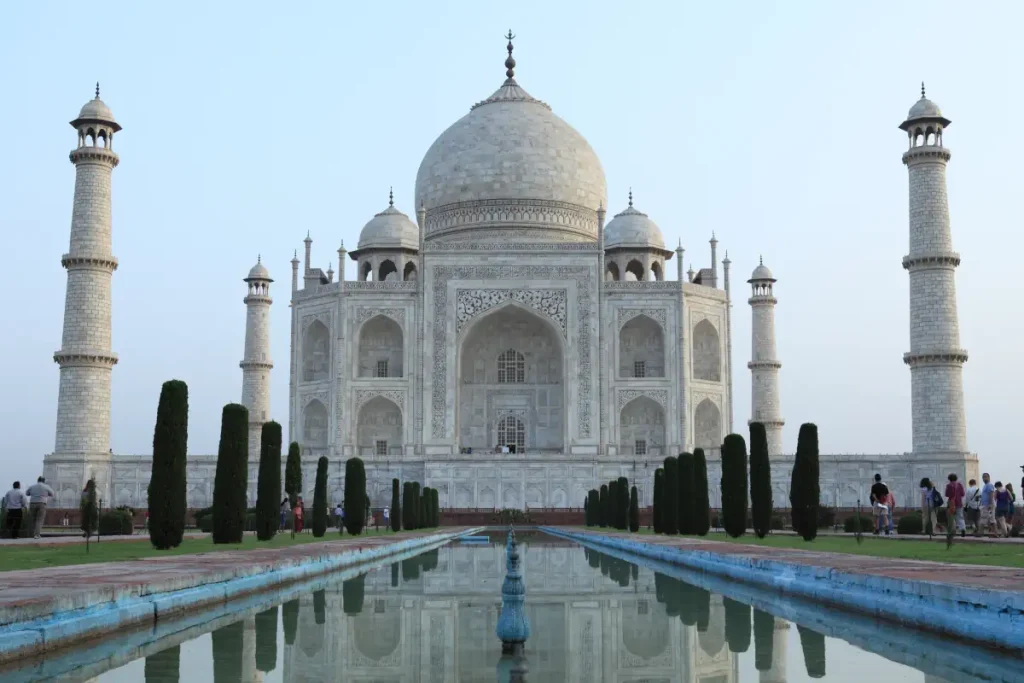
The 5th and 4th countries, France and Spain both have 49 UNESCO World Heritage Sites. They are listed in alphabetical order.
5. Spain
Total number of UNESCO World Heritage Sites: 50
Natural: 4, Cultural: 44, Mixed: 2
- Alhambra, Generalife and Albayzín, Granada (cultural)
- Burgos Cathedral (cultural)
- Historic Centre of Cordoba (cultural)
- Monastery and Site of the Escurial, Madrid (cultural)
- Works of Antoni Gaudí (cultural)
- Cave of Altamira and Paleolithic Cave Art of Northern Spain (cultural)
- Monuments of Oviedo and the Kingdom of the Asturias (cultural)
- Old Town of Ávila with its Extra-Muros Churches (cultural)
- Old Town of Segovia and its Aqueduct (cultural)
- Santiago de Compostela (Old Town) (cultural)
- Garajonay National Park (natural)
- Historic City of Toledo (cultural)
- Mudejar Architecture of Aragon (cultural)
- Old Town of Cáceres (cultural)
- Cathedral, Alcázar and Archivo de Indias in Seville (cultural)
- The Old City of Salamanca (cultural)
- Poblet Monastery (cultural)
- Archaeological Ensemble of Mérida (cultural)
- Routes of Santiago de Compostela: Camino Francés and Routes of Northern Spain (cultural)
- Royal Monastery of Santa María de Guadalupe (cultural)
- Doñana National Park (natural)
- Historic Walled Town of Cuenca (cultural)
- La Lonja de la Seda de Valencia (cultural)
- Las Médulas (cultural)
- Palau de la Música Catalana and Hospital de Sant Pau, Barcelona (cultural)
- Pyrénées – Mont Perdu (mixed)
- San Millán Yuso and Suso Monasteries (cultural)
- Prehistoric Rock Art Sites in the Côa Valley and Siega Verde * (cultural)
- Rock Art of the Mediterranean Basin on the Iberian Peninsula (cultural)
- University and Historic Precinct of Alcalá de Henares (cultural)
- Ibiza, Biodiversity and Culture (mixed)
- San Cristóbal de La Laguna (cultural)
- Archaeological Ensemble of Tárraco (cultural)
- Archaeological Site of Atapuerca (cultural)
- Catalan Romanesque Churches of the Vall de Boí (cultural)
- Palmeral of Elche (cultural)
- Roman Walls of Lugo (cultural)
- Aranjuez Cultural Landscape (cultural)
- Renaissance Monumental Ensembles of Úbeda and Baeza (cultural)
- Vizcaya Bridge (cultural)
- Ancient and Primeval Beech Forests of the Carpathians and Other Regions of Europe * (natural)
- Teide National Park (natural)
- Tower of Hercules (cultural)
- Cultural Landscape of the Serra de Tramuntana (cultural)
- Heritage of Mercury. Almadén and Idrija * (cultural)
- Antequera Dolmens Site (cultural)
- Caliphate City of Medina Azahara (cultural)
- Risco Caido and the Sacred Mountains of Gran Canaria Cultural Landscape (cultural)
- Paseo del Prado and Buen Retiro, a landscape of Arts and Sciences (cultural)
- Talayotic Menorca (cultural)

4. France
Total number of UNESCO World Heritage Sites: 53
Natural: 7, Cultural: 44, Mixed: 2
- Chartres Cathedral (cultural)
- Mont-Saint-Michel and its Bay (cultural)
- Palace and Park of Versailles (cultural)
- Prehistoric Sites and Decorated Caves of the Vézère Valley (cultural)
- Vézelay, Church and Hill (cultural)
- Amiens Cathedral (cultural)
- Arles, Roman and Romanesque Monuments (cultural)
- Cistercian Abbey of Fontenay (cultural)
- Palace and Park of Fontainebleau (cultural)
- Roman Theatre and its Surroundings and the “Triumphal Arch” of Orange (cultural)
- From the Great Saltworks of Salins-les-Bains to the Royal Saltworks of Arc-et-Senans, the Production of Open-pan Salt (cultural)
- Abbey Church of Saint-Savin sur Gartempe (cultural)
- Gulf of Porto: Calanche of Piana, Gulf of Girolata, Scandola Reserve (natural)
- Place Stanislas, Place de la Carrière and Place d’Alliance in Nancy (cultural)
- Pont du Gard (Roman Aqueduct) (cultural)
- Strasbourg, Grande-Île and Neustadt (cultural)
- Cathedral of Notre-Dame, Former Abbey of Saint-Rémi and Palace of Tau, Reims (cultural)
- Paris, Banks of the Seine (cultural)
- Bourges Cathedral (cultural)
- Historic Centre of Avignon: Papal Palace, Episcopal Ensemble, and Avignon Bridge (cultural)
- Canal du Midi (cultural)
- Historic Fortified City of Carcassonne (cultural)
- Pyrénées – Mont Perdu (mixed)
- Historic Site of Lyon (cultural)
- Routes of Santiago de Compostela in France (cultural)
- Belfries of Belgium and France * (cultural)
- Jurisdiction of Saint-Emilion (cultural)
- The Loire Valley between Sully-sur-Loire and Chalonnes (cultural)
- Provins, Town of Medieval Fairs (cultural)
- Le Havre, the City Rebuilt by Auguste Perret (cultural)
- Ancient and Primeval Beech Forests of the Carpathians and Other Regions of Europe * (natural)
- Bordeaux, Port of the Moon (cultural)
- Fortifications of Vauban (cultural)
- Lagoons of New Caledonia: Reef Diversity and Associated Ecosystems (natural)
- Episcopal City of Albi (cultural)
- Pitons, cirques and remparts of Reunion Island (natural)
- Prehistoric Pile Dwellings around the Alps * (cultural)
- The Causses and the Cévennes, Mediterranean agro-pastoral Cultural Landscape (cultural)
- Nord-Pas de Calais Mining Basin (cultural)
- Decorated Cave of Pont d’Arc, known as Grotte Chauvet-Pont d’Arc, Ardèche (cultural)
- Champagne Hillsides, Houses and Cellars (cultural)
- The Climats, terroirs of Burgundy (cultural)
- The Architectural Work of Le Corbusier, an Outstanding Contribution to the Modern Movement * (cultural)
- Taputapuātea (cultural)
- Chaîne des Puys – Limagne fault tectonic arena (natural)
- French Austral Lands and Seas (natural)
- Cordouan Lighthouse (cultural)
- Nice, Winter Resort Town of the Riviera (cultural)
- The Great Spa Towns of Europe (cultural)
- Funerary and memory sites of the First World War (Western Front) * (cultural)
- The Maison Carrée of Nîmes (cultural)
- Volcanoes and Forests of Mount Pelée and the Pitons of Northern Martinique (natural)
- Te Henua Enata – The Marquesas Islands (mixed)
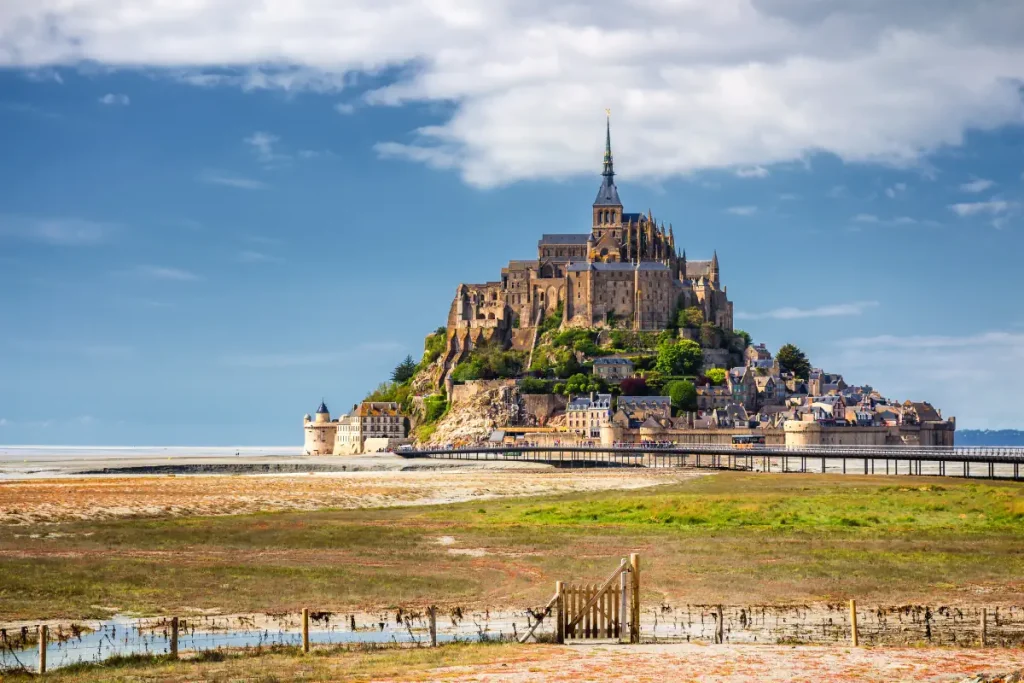
3. Germany
Total number of UNESCO World Heritage Sites: 54
Natural: 3, Cultural: 51
- Aachen Cathedral (cultural)
- Speyer Cathedral (cultural)
- Würzburg Residence with the Court Gardens and Residence Square (cultural)
- Pilgrimage Church of Wies (cultural)
- Castles of Augustusburg and Falkenlust at Brühl (cultural)
- St Mary’s Cathedral and St Michael’s Church at Hildesheim (cultural)
- Roman Monuments, Cathedral of St Peter, and Church of Our Lady in Trier (cultural)
- Frontiers of the Roman Empire * (cultural)
- Hanseatic City of Lübeck (cultural)
- Palaces and Parks of Potsdam and Berlin (cultural)
- Abbey and Altenmünster of Lorsch (cultural)
- Mines of Rammelsberg, Historic Town of Goslar, and Upper Harz Water Management System (cultural)
- Maulbronn Monastery Complex (cultural)
- Town of Bamberg (cultural)
- Collegiate Church, Castle, and Old Town of Quedlinburg (cultural)
- Völklingen Ironworks (cultural)
- Messel Pit Fossil Site (natural)
- Bauhaus and its Sites in Weimar, Dessau and Bernau (cultural)
- Cologne Cathedral (cultural)
- Luther Memorials in Eisleben and Wittenberg (cultural)
- Classical Weimar (cultural)
- Museumsinsel (Museum Island), Berlin (cultural)
- Wartburg Castle (cultural)
- Garden Kingdom of Dessau-Wörlitz (cultural)
- Monastic Island of Reichenau (cultural)
- Zollverein Coal Mine Industrial Complex in Essen (cultural)
- Historic Centres of Stralsund and Wismar (cultural)
- Upper Middle Rhine Valley (cultural)
- Muskauer Park / Park Mużakowski * (cultural)
- Town Hall and Roland on the Marketplace of Bremen (cultural)
- The old town of Regensburg with Stadtamhof (cultural)
- Ancient and Primeval Beech Forests of the Carpathians and Other Regions of Europe * (natural)
- Berlin Modernism Housing Estates (cultural)
- Wadden Sea (natural)
- Fagus Factory in Alfeld (cultural)
- Prehistoric Pile Dwellings around the Alps * (cultural)
- Margravial Opera House Bayreuth (cultural)
- Bergpark Wilhelmshöhe (cultural)
- Carolingian Westwork and Civitas Corvey (cultural)
- Speicherstadt and Kontorhaus District with Chilehaus (cultural)
- The Architectural Work of Le Corbusier, an Outstanding Contribution to the Modern Movement * (cultural)
- Caves and Ice Age Art in the Swabian Jura (cultural)
- Archaeological Border complex of Hedeby and the Danevirke (cultural)
- Naumburg Cathedral (cultural)
- Erzgebirge/Krušnohoří Mining Region * (cultural)
- Water Management System of Augsburg (cultural)
- Frontiers of the Roman Empire – The Danube Limes (Western Segment) * (cultural)
- Frontiers of the Roman Empire – The Lower German Limes * (cultural)
- Mathildenhöhe Darmstadt (cultural)
- ShUM Sites of Speyer, Worms and Mainz (cultural)
- The Great Spa Towns of Europe (cultural)
- Jewish-Medieval Heritage of Erfurt (cultural)
- Schwerin Residence Ensemble (cultural)
Delisted
- Dresden Elbe Valley (cultural) Delisted in 2009

2. China
Total number of UNESCO World Heritage Sites: 59
Natural: 15, Cultural: 40, Mixed: 4
- Imperial Palaces of the Ming and Qing Dynasties in Beijing and Shenyang (cultural)
- Mausoleum of the First Qin Emperor (cultural)
- Mogao Caves (cultural)
- Mount Taishan (mixed)
- Peking Man Site at Zhoukoudian (cultural)
- The Great Wall (cultural)
- Mount Huangshan (mixed)
- Huanglong Scenic and Historic Interest Area (natural)
- Jiuzhaigou Valley Scenic and Historic Interest Area (natural)
- Wulingyuan Scenic and Historic Interest Area (natural)
- Ancient Building Complex in the Wudang Mountains (cultural)
- Historic Ensemble of the Potala Palace, Lhasa (cultural)
- Mountain Resort and its Outlying Temples, Chengde (cultural)
- Temple and Cemetery of Confucius and the Kong Family Mansion in Qufu (cultural)
- Lushan National Park (cultural)
- Mount Emei Scenic Area, including Leshan Giant Buddha Scenic Area (mixed)
- Ancient City of Ping Yao (cultural)
- Classical Gardens of Suzhou (cultural)
- Old Town of Lijiang (cultural)
- Summer Palace, an Imperial Garden in Beijing (cultural)
- Temple of Heaven: an Imperial Sacrificial Altar in Beijing (cultural)
- Dazu Rock Carvings (cultural)
- Mount Wuyi (mixed)
- Ancient Villages in Southern Anhui – Xidi and Hongcun (cultural)
- Imperial Tombs of the Ming and Qing Dynasties (cultural)
- Longmen Grottoes (cultural)
- Mount Qingcheng and the Dujiangyan Irrigation System (cultural)
- Yungang Grottoes (cultural)
- Three Parallel Rivers of Yunnan Protected Areas (natural)
- Capital Cities and Tombs of the Ancient Koguryo Kingdom (cultural)
- Historic Centre of Macao (cultural)
- Sichuan Giant Panda Sanctuaries – Wolong, Mt Siguniang, and Jiajin Mountains (natural)
- Yin Xu (cultural)
- Kaiping Diaolou and Villages (cultural)
- South China Karst (natural)
- Fujian Tulou (cultural)
- Mount Sanqingshan National Park (natural)
- Mount Wutai (cultural)
- China Danxia (natural)
- Historic Monuments of Dengfeng in “The Centre of Heaven and Earth” (cultural)
- West Lake Cultural Landscape of Hangzhou (cultural)
- Chengjiang Fossil Site (natural)
- Site of Xanadu (cultural)
- Cultural Landscape of Honghe Hani Rice Terraces (cultural)
- Xinjiang Tianshan (natural)
- Silk Roads: the Routes Network of Chang’an-Tianshan Corridor * (cultural)
- The Grand Canal (cultural)
- Tusi Sites (cultural)
- Hubei Shennongjia (natural)
- Zuojiang Huashan Rock Art Cultural Landscape (cultural)
- Kulangsu, a Historic International Settlement (cultural)
- Qinghai Hoh Xil (natural)
- Fanjingshan (natural)
- Archaeological Ruins of Liangzhu City (cultural)
- Migratory Bird Sanctuaries along the Coast of Yellow Sea-Bohai Gulf of China (Phase I) (natural)
- Quanzhou: Emporium of the World in Song-Yuan China (cultural)
- Cultural Landscape of Old Tea Forests of the Jingmai Mountain in Pu’er (cultural)
- Badain Jaran Desert – Towers of Sand and Lakes (natural)
- Beijing Central Axis: A Building Ensemble Exhibiting the Ideal Order of the Chinese Capital (cultural)

1. Italy
Total number of UNESCO World Heritage Sites: 60
Natural: 5, Cultural: 54
- Rock Drawings in Valcamonica (cultural)
- Church and Dominican Convent of Santa Maria delle Grazie with “The Last Supper” by Leonardo da Vinci (cultural)
- Historic Centre of Rome, the Properties of the Holy See in that City Enjoying Extraterritorial Rights and San Paolo Fuori le Mura * (cultural)
- Historic Centre of Florence (cultural)
- Piazza del Duomo, Pisa (cultural)
- Venice and its Lagoon (cultural)
- Historic Centre of San Gimignano (cultural)
- The Sassi and the Park of the Rupestrian Churches of Matera (cultural)
- The City of Vicenza and the Palladian Villas of the Veneto (cultural)
- Crespi d’Adda (cultural)
- Ferrara, City of the Renaissance, and its Po Delta (cultural)
- Historic Centre of Naples (cultural)
- Historic Centre of Siena (cultural)
- Castel del Monte (cultural)
- Early Christian Monuments of Ravenna (cultural)
- Historic Centre of the City of Pienza (cultural)
- The Trulli of Alberobello (cultural)
- 18th-Century Royal Palace at Caserta with the Park, the Aqueduct of Vanvitelli, and the San Leucio Complex (cultural)
- Archaeological Area of Agrigento (cultural)
- Archaeological Areas of Pompei, Herculaneum, and Torre Annunziata (cultural)
- Botanical Garden (Orto Botanico), Padua (cultural)
- Cathedral, Torre Civica and Piazza Grande, Modena (cultural)
- Costiera Amalfitana (cultural)
- Portovenere, Cinque Terre, and the Islands (Palmaria, Tino and Tinetto) (cultural)
- Residences of the Royal House of Savoy (cultural)
- Su Nuraxi di Barumini (cultural)
- Villa Romana del Casale (cultural)
- Archaeological Area and the Patriarchal Basilica of Aquileia (cultural)
- Cilento and Vallo di Diano National Park with the Archeological Sites of Paestum and Velia, and the Certosa di Padula (cultural)
- Historic Centre of Urbino (cultural)
- Villa Adriana (Tivoli) (cultural)
- Assisi, the Basilica of San Francesco, and Other Franciscan Sites (cultural)
- City of Verona (cultural)
- Isole Eolie (Aeolian Islands) (natural)
- Villa d’Este, Tivoli (cultural)
- Late Baroque Towns of the Val di Noto (South-Eastern Sicily) (cultural)
- Sacri Monti of Piedmont and Lombardy (cultural)
- Monte San Giorgio * (natural)
- Etruscan Necropolises of Cerveteri and Tarquinia (cultural)
- Val d’Orcia (cultural)
- Syracuse and the Rocky Necropolis of Pantalica (cultural)
- Genoa: Le Strade Nuove and the system of the Palazzi dei Rolli (cultural)
- Ancient and Primeval Beech Forests of the Carpathians and Other Regions of Europe * (natural)
- Mantua and Sabbioneta (cultural)
- Rhaetian Railway in the Albula / Bernina Landscapes * (cultural)
- The Dolomites (natural)
- Longobards in Italy. Places of the Power (568-774 A.D.) (cultural)
- Prehistoric Pile Dwellings around the Alps * (cultural)
- Medici Villas and Gardens in Tuscany (cultural)
- Mount Etna (natural)
- Vineyard Landscape of Piedmont: Langhe-Roero and Monferrato (cultural)
- Arab-Norman Palermo and the Cathedral Churches of Cefalú and Monreale (cultural)
- Venetian Works of Defence between the 16th and 17th Centuries: Stato da Terra – Western Stato da Mar * (cultural)
- Ivrea, industrial city of the 20th century (cultural)
- Le Colline del Prosecco di Conegliano e Valdobbiadene (cultural)
- Padua’s fourteenth-century fresco cycles (cultural)
- The Great Spa Towns of Europe (cultural)
- The Porticoes of Bologna (cultural)
- Evaporitic Karst and Caves of Northern Apennines (natural)
- Via Appia. Regina Viarum (cultural)

*: transboundary property
UNESCO World Heritage Sites Selection criteria
Nominated sites must be of “outstanding universal value” and meet at least one of the ten criteria:
Cultural
- Represents a masterpiece of human creative genius and cultural significance
- Exhibits an important interchange of human values, over a span of time, or within a cultural area of the world, on developments in architecture or technology, monumental arts, town-planning, or landscape design
- To bear a unique or at least exceptional testimony to a cultural tradition or to a civilization which is living or which has disappeared.
- Is an outstanding example of a type of building, architectural, or technological ensemble or landscape which illustrates a significant stage in human history.
- Is an outstanding example of a traditional human settlement, land-use, or sea-use which is representative of a culture, or human interaction with the environment especially when it has become vulnerable under the impact of irreversible change.
- Is directly or tangibly associated with events or living traditions, with ideas, or with beliefs, with artistic and literary works of outstanding universal significance.
Natural
- Contains superlative natural phenomena or areas of exceptional natural beauty and aesthetic importance.
- Is an outstanding example representing major stages of Earth’s history, including the record of life, significant on-going geological processes in the development of landforms, or significant geomorphic or physiographic features.
- Is an outstanding example representing significant on-going ecological and biological processes in the evolution and development of terrestrial, freshwater, coastal and marine ecosystems, and communities of plants and animals.
- Contains the most important and significant natural habitats for in-situ conservation of biological diversity, including those containing threatened species of outstanding universal value from the point of view of science or conservation.
Important Events
- July 22, 2021 – Liverpool stripped of Unesco World Heritage status: After a United Nations committee decided at a meeting in China that the new developments like the new Everton FC stadium threatened the value of the city’s waterfront, Liverpool lost its World Heritage status.
Sources
- World Heritage Site on Wikipedia
- UNESCO World Heritage Sites List
- Warsaw Old Town on Wikipedia
- Alcobaça Monastery on Wikipedia
- Drottningholm Palace on Wikipedia
- Ephesus on Wikipedia
- Virginia Falls (Northwest Territories) on Wikipedia
- Acropolis of Athens on Wikipedia
- Great Barrier Reef on Wikipedia
- Ouro Preto on Wikipedia
- Persepolis on Wikipedia
- Himeji Castle on Wikipedia
- Yosemite National Park on
W ikipedia - Saint Isaac’s Cathedral on Wikipedia
- Durham Castle on
W ikipedia - Taj Mahal on
Wikipedia - El Castillo, Chichen Itza on
Wikipedia - Amiens Cathedral on W
ikipedia - Cologne Cathedral on
Wikipedia - Alhambra on
Wi kipedia - Great Wall of China on
Wikipedia - Grand Canal (Venice) on
W ikipedia
- Moon Landings: All-Time List [1966-2025] - February 2, 2025
- What Is Max-Q and Why Is It Important During Rocket Launches? - January 16, 2025
- Top 10 Tallest Rockets Ever Launched [2025 Update] - January 16, 2025
